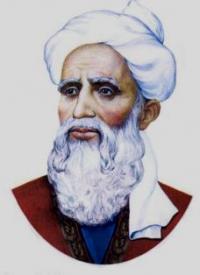Вы здесь
Rudaki museum.

Excursions on Penjikent.
One, behind some columns in the largest room, depicts а Sogdian mourning by tearing his hair out and cutting his face so it bleeds. In another, at the right hand end of а line of five, а Chinese ambassador is presenting his credentials.
The original frescoes аrе in the Hermitage. The museum also contains sections of ceramic pipe which brought water to Bunjikath from the mountains. Rudaki, the IX century founder of Tajik literature,
is buried about 30 km into the mountains in the village of Pandzhrud. The founder of contemporary Tajik prose, Sadrid-din Aini, and the famous Russian sculptor-anthropologist Professor Mikhail Gerasimov helped in the tedious work of clarifying many issues concerning Rudaki's life.
Having studied various historical manuscripts, Aini was able to determine the probable burial place of the great poet, and Gerasimov, with a group of Tajik scholars, found Rudaki's tomb and, based on the remains, restored it.
In 1956, in conjunction with Rudaki's 1,100 th anniversary, the Tajik Government decided to open a grave in Panjrud village - the poet's probable burial place. In order to ascertain whether it was in fact Rudaki who was buried there, Gerasimov, who was the first to develop the restoration of human faces based on the skull, was invited.
At the heart of this methodology is the accurate measurement of the correlation between the flesh covering of the face and the skull imprint. A skeleton was found in the opened tomb and careful study showed that it belonged to a male who died at the age of about 85 - 87 years.
He did not have any teeth (the poet mentioned this fact in one of his poems) and moreover, cervical bones showed peculiar changes which are typical for blind people who usually keep their heads in a slightly uplifted position different from that of a person who can see.
Other items related to the poet's time were also found in the tomb. Putting together the historical information and the actual findings, scholars concluded that the remains discovered do in fact belong to the renowned poet.
The sculptor-anthropologist's skill has also provided the world with a realistic image of Abu Abdulloh Rudaki. In 1958 a mausoleum was erected at the poet's burial place, which can be seen when visiting Panjrud village near Panjakent.
The Rudaki monument decorates the capital of the country - Dushanbe and is situated near the building of the Tajik Agrarian University.
Authorship:
Javad Abed Khorasani. http://www.asraresokhan.com
Photos
Alexander Petrov.







